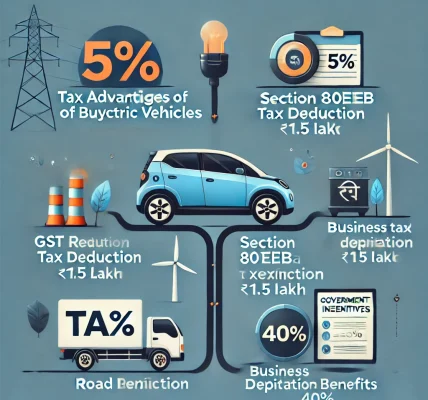Planning for retirement is essential to secure your financial future, and one of the most effective ways to do so is by maximizing tax-advantaged contributions. By optimizing your retirement contributions, you not only build long-term wealth but also reduce your current tax liability. In this guide, we will explore different retirement accounts, tax benefits, and strategies to optimize your contributions legally and effectively.
1. Understanding Tax-Advantaged Retirement Accounts
There are several types of retirement accounts that offer tax benefits. Understanding the differences will help you choose the right one for your financial goals.
a) Traditional Individual Retirement Account (IRA)
- Contributions are tax-deductible, reducing your taxable income.
- Growth is tax-deferred until withdrawal.
- Withdrawals in retirement are taxed as ordinary income.
- Contribution limit for 2024: $7,000 ($8,000 if age 50 or older).
b) Roth IRA
- Contributions are not tax-deductible.
- Growth and qualified withdrawals are tax-free.
- Ideal for individuals expecting to be in a higher tax bracket in retirement.
- Contribution limit for 2024: $7,000 ($8,000 if age 50 or older).
c) 401(k) and 403(b) Plans
- Employer-sponsored retirement plans with pre-tax contributions.
- Contributions reduce your taxable income.
- Growth is tax-deferred until withdrawal.
- Contribution limit for 2024: $23,000 ($30,500 if age 50 or older).
- Employers may offer matching contributions, which is free money for employees.
d) Roth 401(k)
- Contributions are after-tax, but qualified withdrawals are tax-free.
- No income limits like a Roth IRA.
- Good for individuals expecting higher income in retirement.
e) Simplified Employee Pension (SEP-IRA) and Solo 401(k)
- Designed for self-employed individuals and small business owners.
- Contributions are tax-deductible and tax-deferred.
- Contribution limit for SEP-IRA (2024): 25% of compensation, up to $69,000.
- Contribution limit for Solo 401(k) (2024): $69,000 ($76,500 if age 50 or older).
2. Tax Benefits of Retirement Contributions
a) Reduce Your Taxable Income
- Contributions to traditional IRAs and 401(k)s reduce adjusted gross income (AGI).
- Lower AGI may help qualify for other tax credits and deductions.
b) Tax-Deferred Growth
- Earnings on investments in traditional IRAs and 401(k)s grow tax-free until withdrawal.
- This allows for compounding over time without annual tax liability.
c) Tax-Free Withdrawals (Roth Accounts)
- Roth IRAs and Roth 401(k)s allow tax-free withdrawals in retirement.
- Provides greater flexibility in retirement tax planning.
d) Employer Matching Contributions
- Many employers offer matching contributions to 401(k) plans.
- This is essentially free money and an immediate return on investment.
e) Saver’s Credit
- Low- to moderate-income earners may qualify for the Retirement Savings Contributions Credit (Saver’s Credit).
- Provides a tax credit of 10% to 50% of contributions, up to $2,000 for individuals and $4,000 for couples.
- Income limits apply.
3. Strategies to Maximize Tax Benefits
a) Contribute the Maximum Allowed Amount
- Aim to contribute up to the IRS limit each year.
- Take advantage of catch-up contributions if age 50 or older.
b) Take Full Advantage of Employer Matching
- Contribute at least enough to receive the full employer match in a 401(k).
- Failing to do so is leaving free money on the table.
c) Consider a Roth Conversion
- If expecting higher taxes in retirement, converting a traditional IRA to a Roth IRA can help.
- Taxes are paid at conversion, but future withdrawals are tax-free.
d) Balance Pre-Tax and After-Tax Contributions
- Diversifying between Traditional (pre-tax) and Roth (after-tax) accounts provides flexibility in retirement withdrawals.
- Helps manage taxable income in retirement.
e) Automate Contributions
- Set up automatic deductions to consistently invest in retirement accounts.
- Helps ensure contributions are made regularly without missing deadlines.
f) Use Tax-Efficient Investment Strategies
- Hold high-growth investments in tax-advantaged accounts (e.g., stocks in Roth IRA).
- Hold income-generating assets (e.g., bonds) in traditional accounts to defer taxes.
g) Plan Withdrawals Strategically
- Required Minimum Distributions (RMDs) begin at age 73 for traditional IRAs and 401(k)s.
- Withdrawals should be planned to minimize tax impact in retirement.
4. Avoiding Common Mistakes
a) Not Contributing Enough to Get Employer Match
- Always contribute enough to get full employer match.
b) Ignoring Roth Accounts
- Roth accounts provide tax-free withdrawals, making them valuable in retirement.
c) Withdrawing Early
- Withdrawing before age 59½ may result in a 10% penalty and additional taxes.
d) Forgetting About RMDs
- Failure to take RMDs from traditional IRAs and 401(k)s results in a 50% penalty on the amount not withdrawn.
Conclusion
Optimizing retirement contributions is one of the best ways to reduce taxes and build a secure financial future. By utilizing tax-advantaged accounts, taking advantage of employer matches, and implementing smart tax strategies, you can maximize savings while ensuring financial stability in retirement. Consult a tax or financial advisor for personalized guidance to align with your long-term goals and tax situation.




